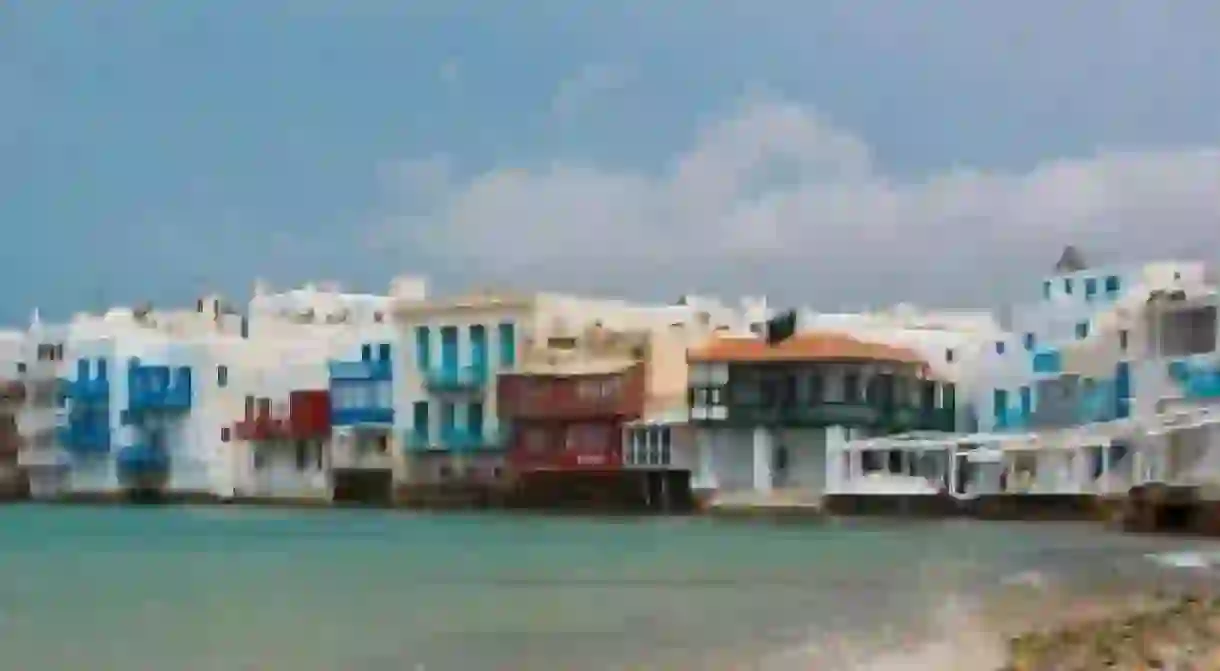The Secret Charm Of The Mykonian Architecture

White like the sun, blue like the sea, fascinating like the stories of old times. Like all Cycladic islands, Mykonos has a unique architectural style consisting of simple materials and lines. Its structures used to respond to the needs of the first residents; however, today, they match in harmony with the natural beauty of the Aegean Sea.

There is a small joke among the people living in Mykonos; when a visitor asks for directions, the answer is ‘you will find this place next to the white house with the blue windows.’ This advice has no use, of course, as almost every house on the island follows the same style. Cubic whitewashed houses without roofs, blue shutters, churches with colored domes, picturesque windmills and countless narrow streets make up the ‘character’ of Mykonos that unites the past with the present.

A snow-white maze of houses
Once in Mykonos Town, the point for any visitor is to get lost; however, there is no need to worry as all the smaller streets lead to the main roads. The organization of house settlements, of the broader Aegean, was naturally affected by the threat posed by pirates, who usually attacked the Cyclades. This is why the houses in town rise above others, and the streets are numerous and narrow. The lack of building materials resulted in the size of the buildings, while the shape protects them from adverse weather conditions. For example, open areas on the top of the roofs protect residents from the winds, while the whitening mixture on the outside reduces the heat during the summer.

I see churches everywhere
It is said that ‘there are as many chapels located on the island as the days of the year.’ Churches and chapels remain one of the strongest points of cultural reference in the region and make up an integral part of everyday life for the locals. Most of Mykonian families own a small church, reflecting the high religious sentiment of the people along with the commitment to tradition and in some cases, the fulfillment of a personal vow.

Windmills in ‘the island of the winds’
Αs evidenced in maps of the 15th century, the inhabitants of the island managed, relatively early, to create wealth by taking advantage of wind power. A total of 28 mills were operating in the 19th century, and they, along with the bakeries, were the main employers of the locals. These three-story, cylindrical, stone-constructed buildings were whitewashed and had cone-shaped roofs covered by plants. Triangular sails attached to wooden antennae made the external wheel rotate when powered by the wind. The wheel then forced the millstones to turn, setting the grinding mechanism into motion. The flour would then fall to the middle floor, while the ground floor functioned as the weighing room and storage area. Today, the windmills are no longer in operation, yet they are carefully maintained. Their imposing construction causes the admiration of visitors and indicates the cultural identity of Mykonos across the world.

Little Venice
One of the most picturesque corners of the island is Alefkandra, better known as ‘Little Venice.’ Constructed in mid-18th century, it is a quarter featuring charming houses, which were once homes of the rich merchants and captains, built along the sea. This great sample of architecture, complete with colorful verandas, windows, doors, stairs, and wooden balconies literally ‘washed by the waves,’ is reminiscent of the famous Italian city. In the afternoons, hundreds of visitors gather here to admire one of the most beautiful sunsets in the Aegean. The view is equally captivating during the winter when the rough sea hits the rocks and the houses.













